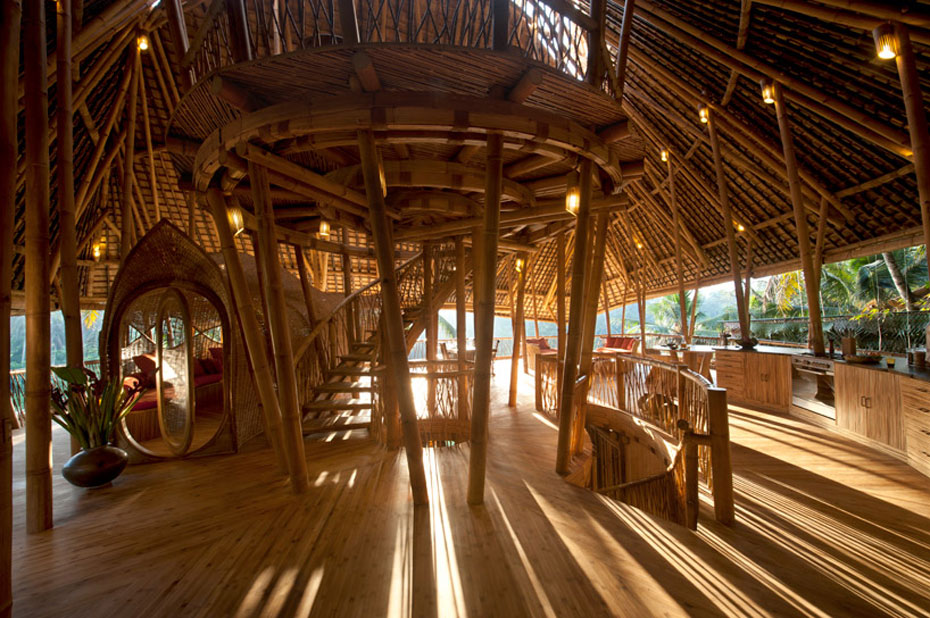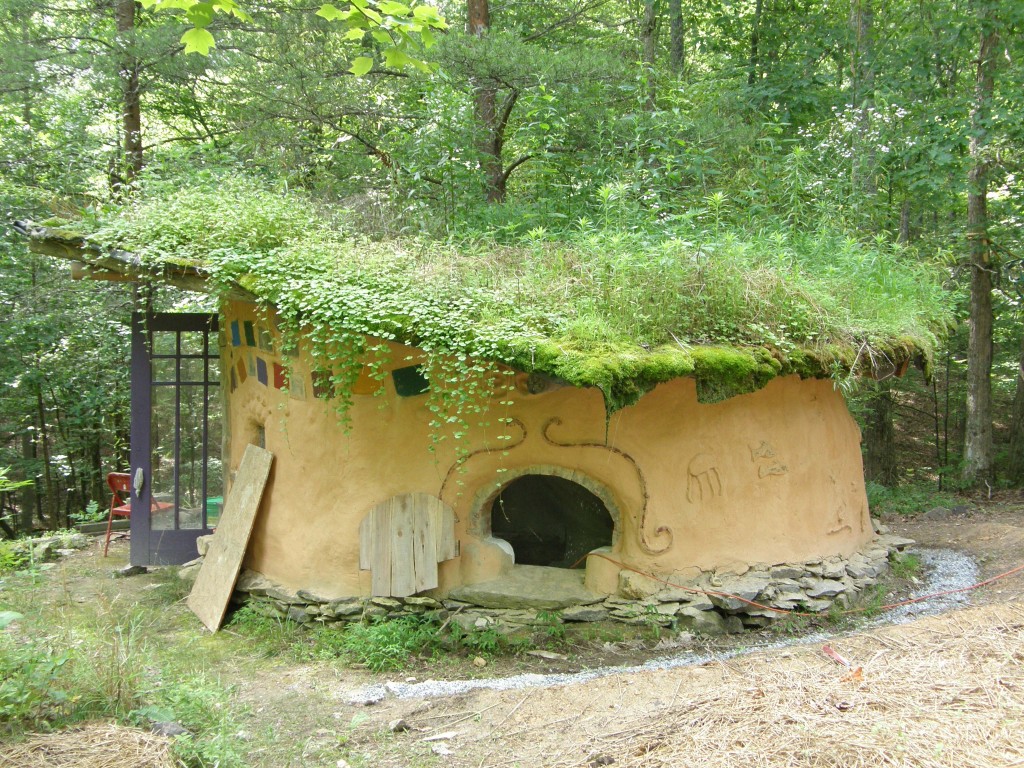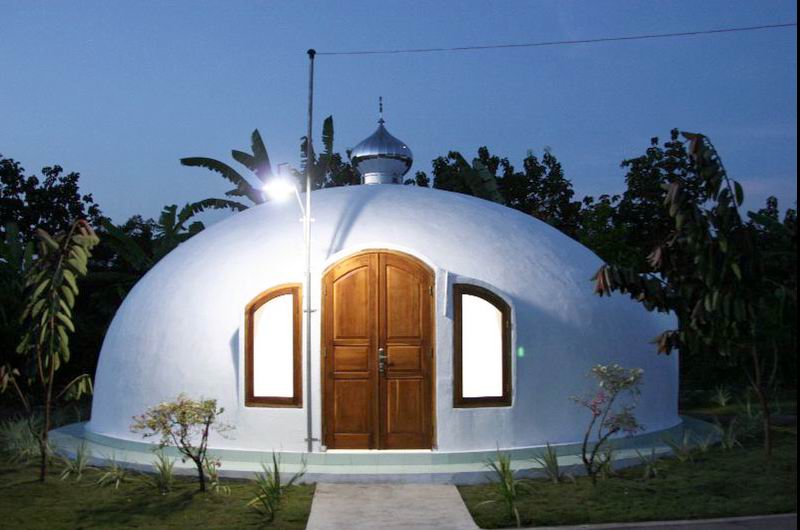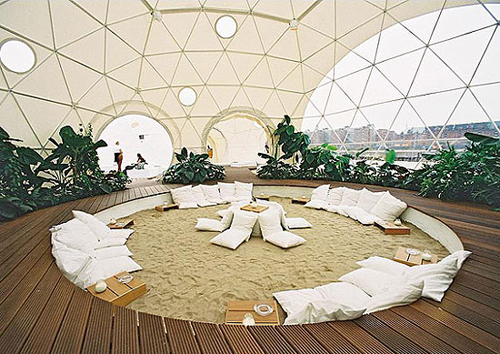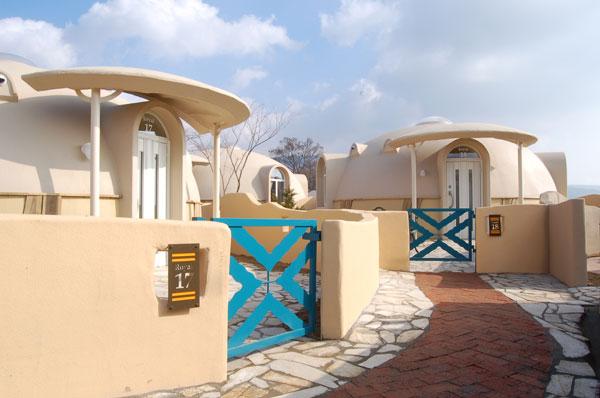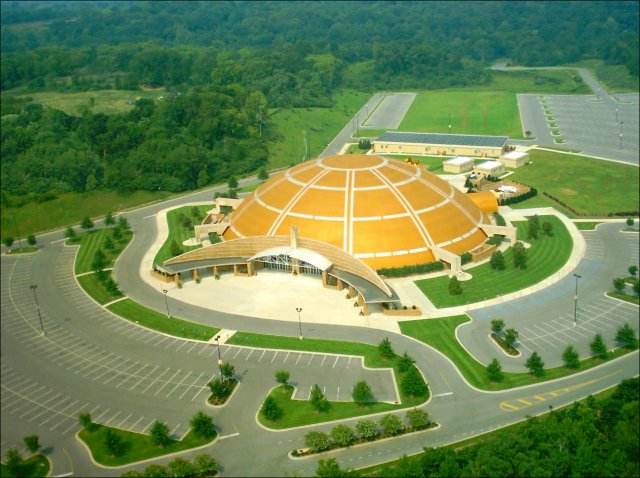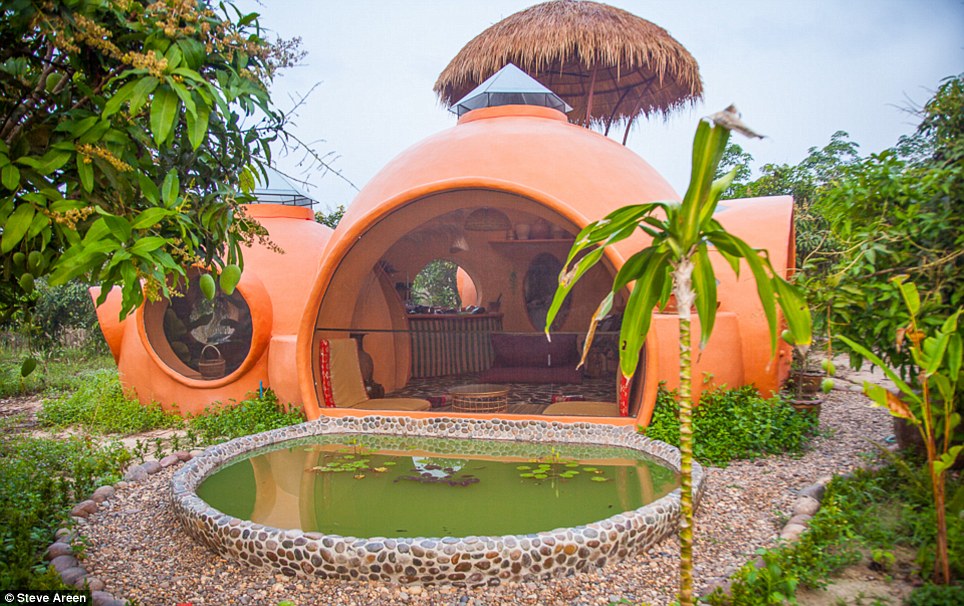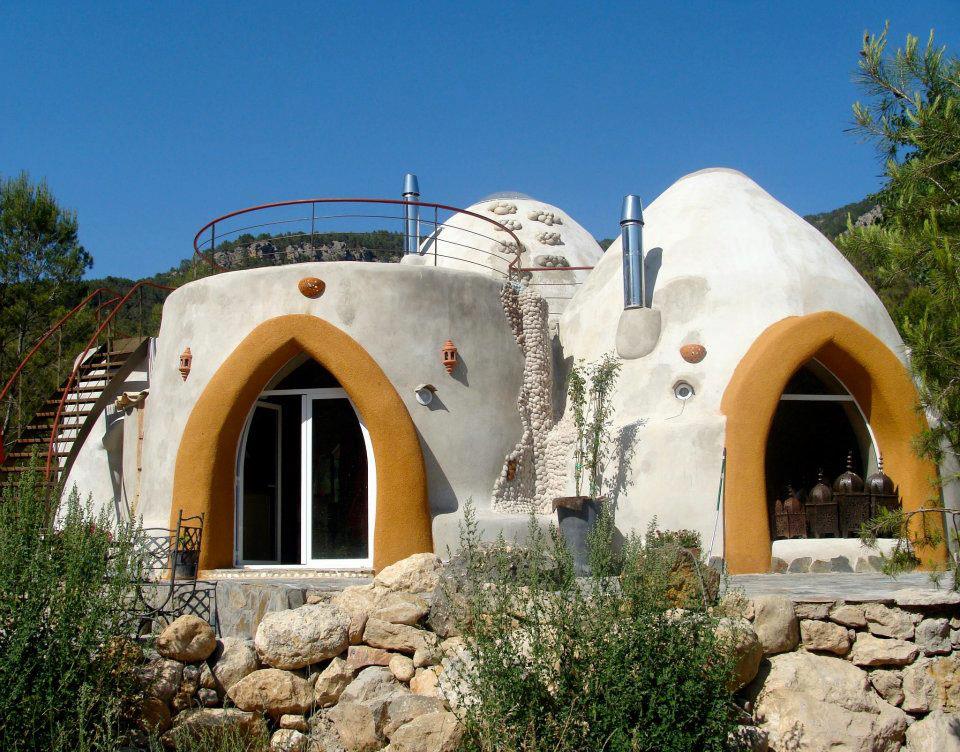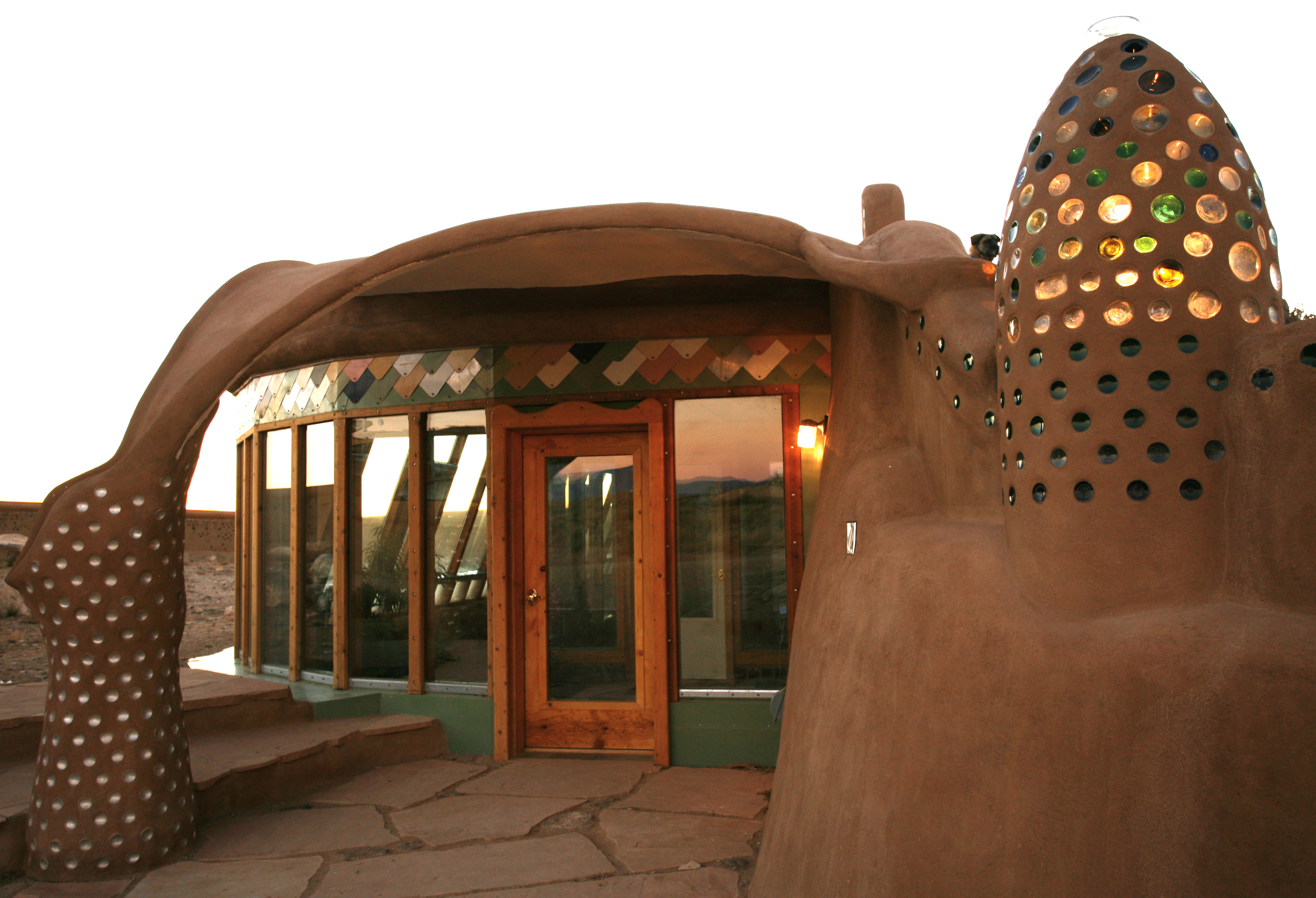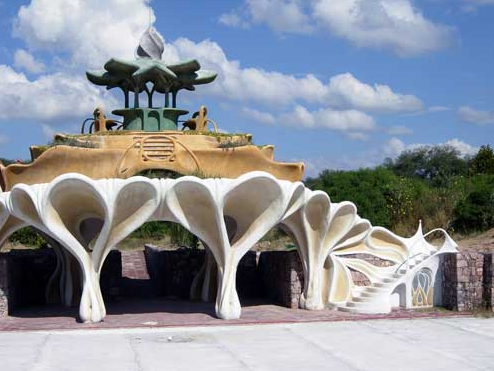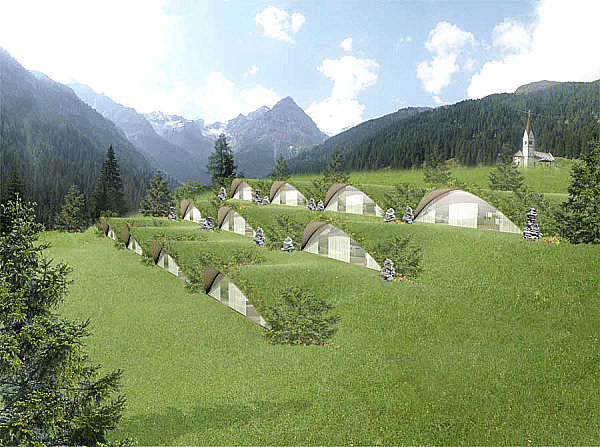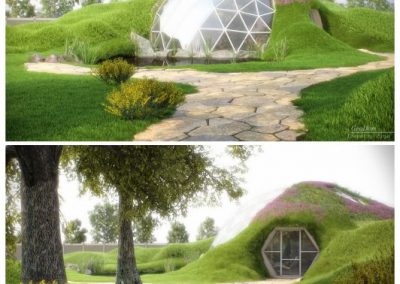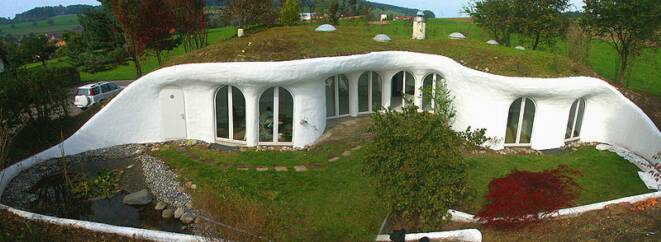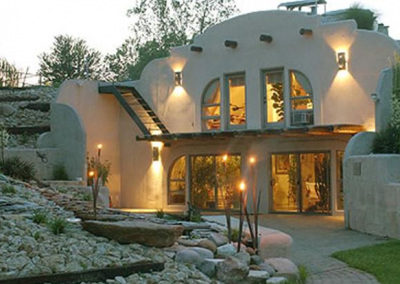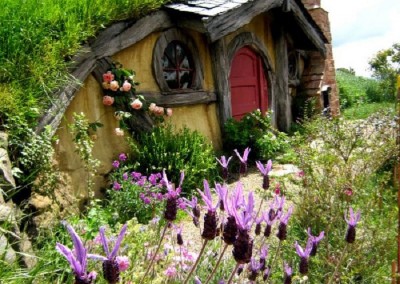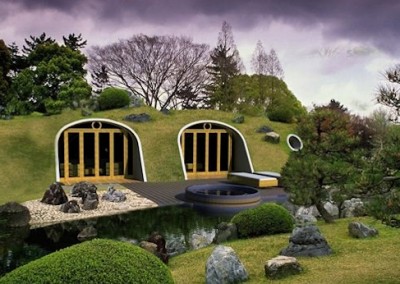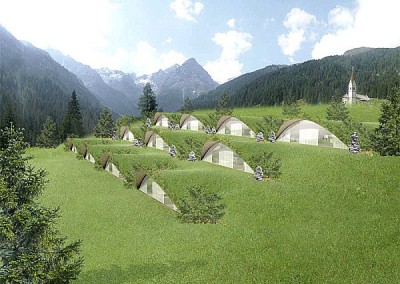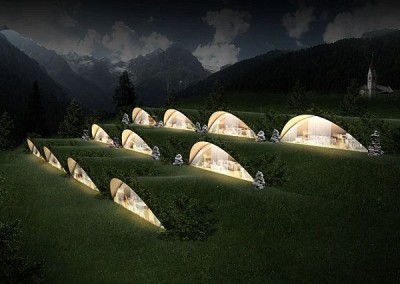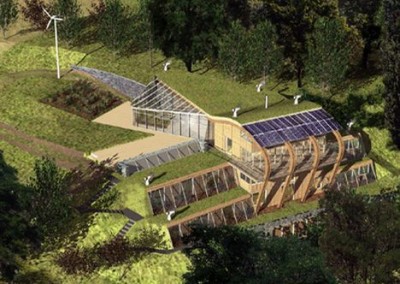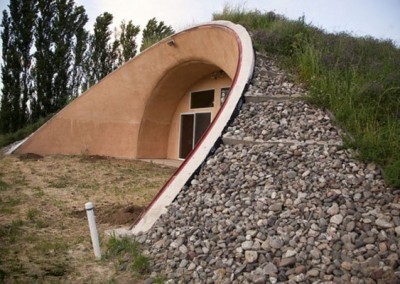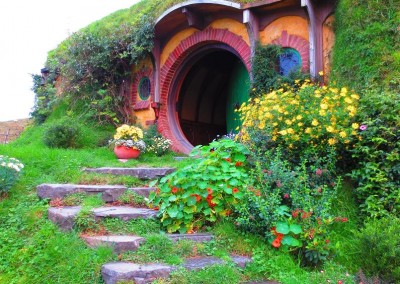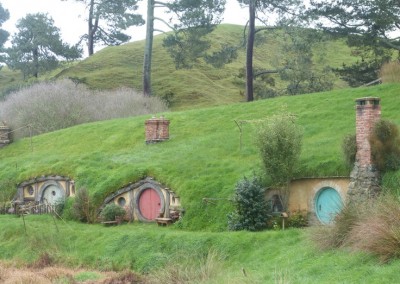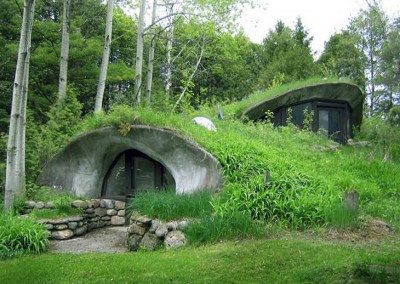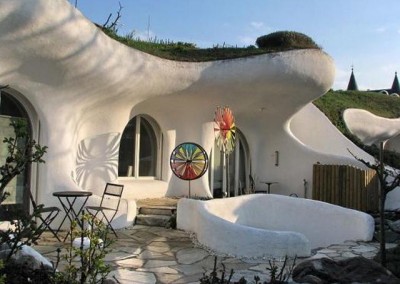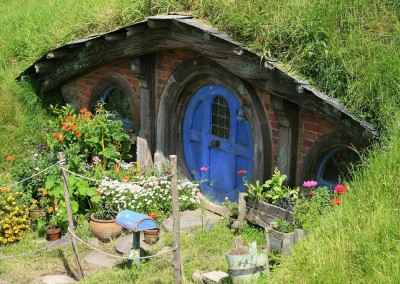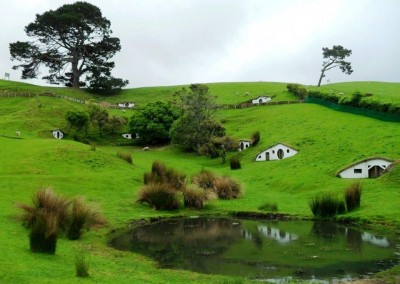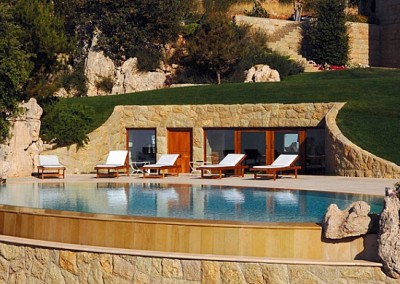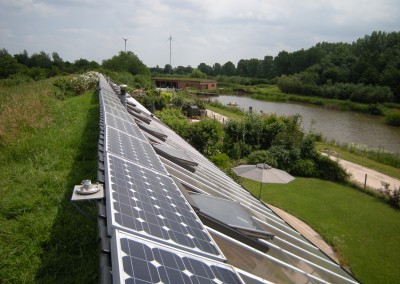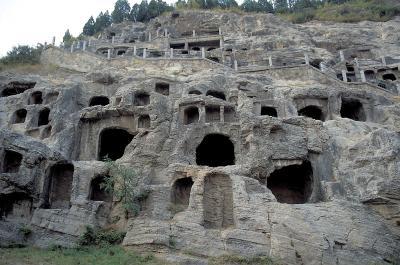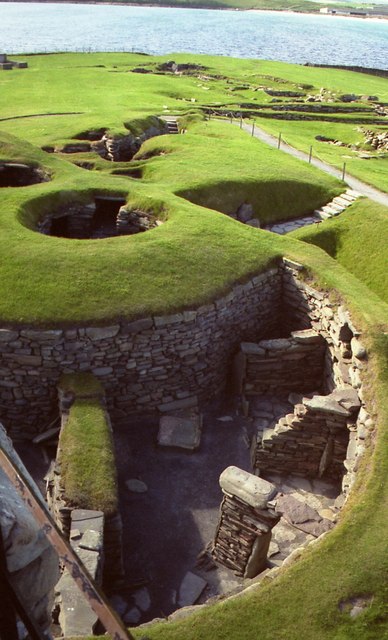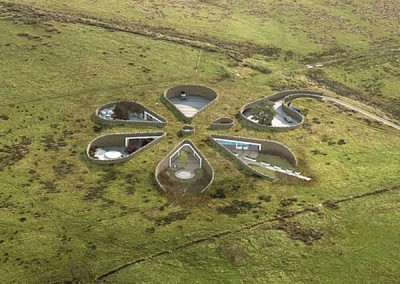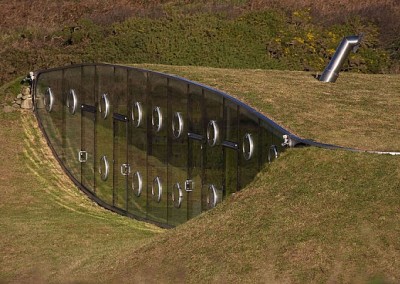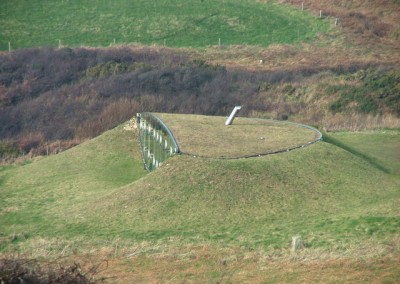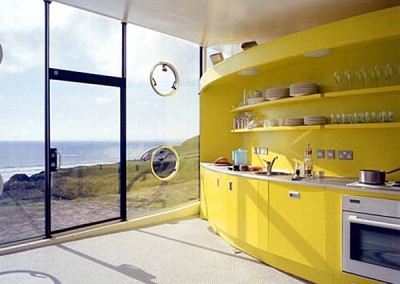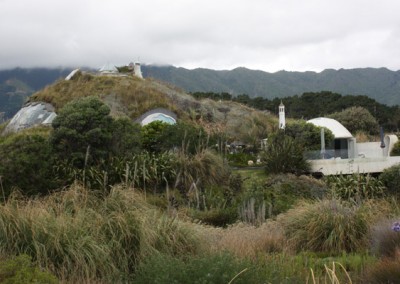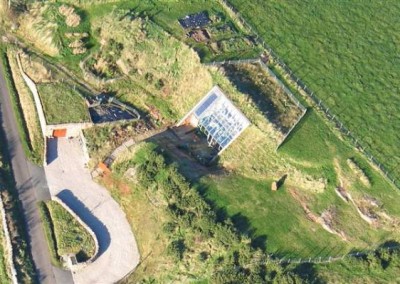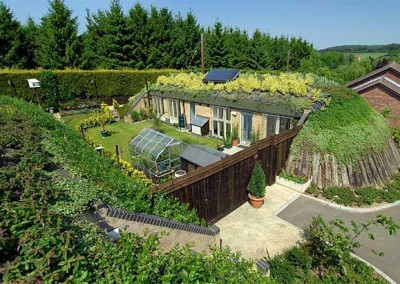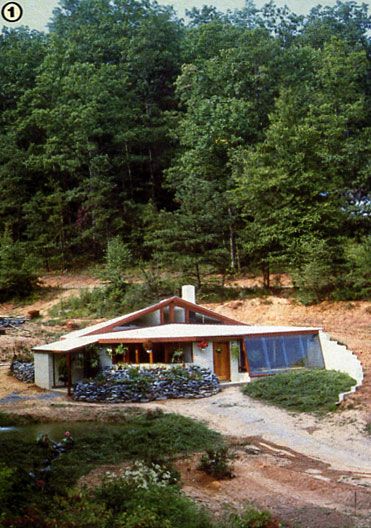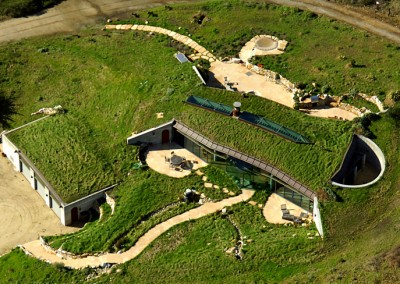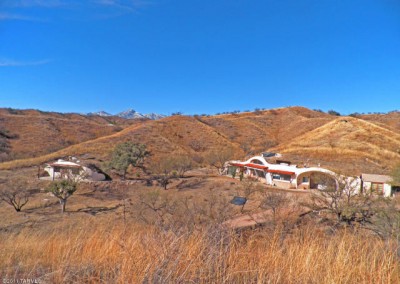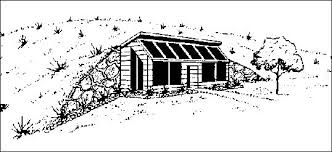Underground
Underground
Cost Effective
The main material costs are relatively inexpensive and sometimes even free when found on site. This combined with doing it yourself makes it very affordable.
Easy To Build
The techniques can be taught fairly easily to helpers. The structure goes up quickly with everyone pitching in.
Do It Yourself
You can do the work yourself with guidance from an experienced craftsman. Friends and family can pitch in to get it done quickly.
Benefits, Costs, and Environmental Impact
Earth sheltering is the architectural practice of using earth against building walls for external thermal mass, to reduce heat loss, and to easily maintain a steady indoor air temperature. Earth sheltering has become relatively more popular in modern times, especially among environmentalists and advocates of passive solar and sustainable architecture. However, the practice has been around for nearly as long as humans have been constructing their own shelters.
The benefits of earth sheltering are numerous. They include: taking advantage of the earth as a thermal mass, offering extra protection from the natural elements, energy savings, providing substantial privacy, efficient use of land in urban settings, shelters have low maintenance requirements, and earth sheltering commonly takes advantage of passive solar building design.
The Earth’s mass absorbs and retains heat. Over time, this heat is released to surrounding areas, such as an earth shelter. Because of the high density of the earth, change in the earth’s temperature occurs slowly. This is known as ‘thermal lag.’ Because of this principle, the earth provides a fairly constant temperature for the underground shelters, even when the outdoor temperature undergoes great fluctuation. In most of the United States, the average temperature of the earth once below the frost line is between 55 and 57 degrees Fahrenheit (13 to 14 degrees Celsius). Frost line depths vary from region to region. In the USA frost lines can range from just under the surface to more than 40 inches. Thus, at the base of a deep earth berm, the house is heated against an exterior temperature gradient of perhaps ten to fifteen degrees, instead of against a steeper temperature grade where air is on the outside of the wall instead of earth. During the summer, the temperature gradient helps to cool the house.
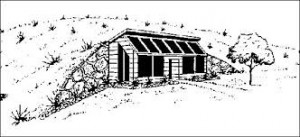 Construction Technique
Construction Technique
- Earth berming: Earth is piled up against exterior walls and packed, sloping down away from the house. The roof may or may not be fully earth covered, and windows/openings may occur on one or more sides of the shelter. Due to the building being above ground, fewer moisture problems are associated with earth berming in comparison to underground/fully recessed construction.
- In-hill construction: The house is set into a slope or hillside. The most practical application is using a hill facing towards the equator (south in the Northern Hemisphere and north in the Southern Hemisphere). There is only one exposed wall in this type of earth sheltering, the wall facing out of the hill, all other walls are embedded within the earth/hill.
- Underground/fully recessed construction: The ground is excavated, and the house is set in below grade. It can also be referred to as an Atrium style due to the common atrium/courtyard constructed in the middle of the shelter to provide adequate light and ventilation.
Websites and Videos
Inhabitat.com is devoted to the future of design, tracking the innovations in technology, practices and materials that are pushing architecture and home design towards a smarter and more sustainable future.
Click Image Below See More Sustainable Building Types
